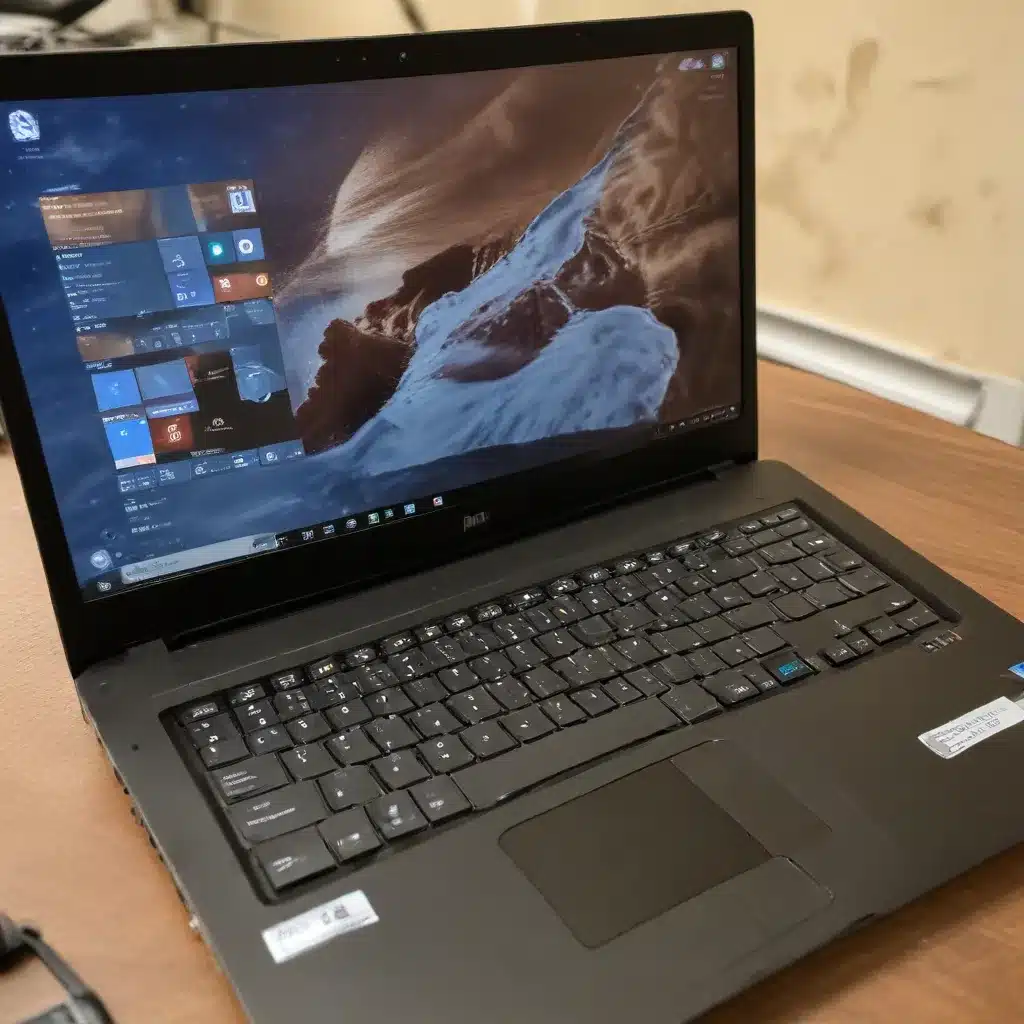
The Benefits of Dual Booting: Versatility and Control
As an experienced IT professional, I’ve seen the power and flexibility that a dual-boot setup can bring to laptop users. Whether you’re a developer, a student, or simply someone who enjoys having options, the ability to switch between Windows and Linux on a single machine can be a game-changer.
Dual booting allows you to take advantage of the strengths of both operating systems, using Windows for applications that require it and Linux for its powerful development and customization tools. This setup provides a versatile and efficient way to utilize the best of both worlds, tailored to your specific needs.
Preparing Your Laptop for Dual Booting
Before you can set up a dual-boot system, it’s important to ensure that your laptop is ready. The first step is to determine whether your Windows installation is in legacy BIOS mode or UEFI mode. This information will be crucial in the partitioning process.
Next, you’ll need to free up some space on your hard drive to accommodate the Linux installation. This can be done by shrinking an existing Windows partition, creating unallocated space that can be used for the Linux system. It’s recommended to allocate around 100-150 GB of space for the Linux partition, depending on your needs.
Choosing the Right Linux Distribution
When it comes to dual booting, the Linux distribution you choose can make a significant difference. For this guide, we’ll be focusing on installing Ubuntu, as it is one of the most popular and user-friendly Linux distributions available.
To get started, you’ll need to download the latest LTS (Long Term Support) version of Ubuntu from the official website (www.ubuntu.com). This version provides longer-term support and updates, making it a reliable choice for a dual-boot setup.
Creating a Bootable USB Drive
With the Ubuntu ISO file downloaded, you’ll need to create a bootable USB drive. This can be done using a tool like Rufus, which allows you to write the ISO image to the USB drive in a way that makes it bootable.
The process involves setting up Rufus, selecting the appropriate options, and then writing the Ubuntu image to the USB drive. Once the process is complete, you’ll have a bootable USB drive that you can use to install Ubuntu alongside your existing Windows installation.
The Dual-Boot Installation Process
The actual installation process for setting up the dual-boot system involves several key steps:
-
Booting from the Ubuntu USB Drive: During the boot process, you’ll be prompted to choose the language and keyboard layout. Select the appropriate options for your setup.
-
Selecting the Installation Type: Choose the “Something Else” option, which will allow you to manually partition the drive and configure the dual-boot setup.
-
Partitioning the Drive: This is a crucial step. You’ll need to create a swap area, a root file system partition for Ubuntu, and ensure that the remaining unallocated space is properly recognized.
-
Configuring the Bootloader: The installation process will guide you through the selection of the device for bootloader installation, which is necessary for the dual-boot functionality.
-
Finalizing the Installation: Complete the installation process, making sure to review and confirm the modifications to the partition table before proceeding.
Mastering the Dual-Boot Experience
Once the dual-boot setup is complete, you’ll be able to choose which operating system to boot into during the startup process. The bootloader, such as GRUB, will provide a menu where you can select either Windows or Ubuntu.
It’s important to note that dual booting itself does not significantly impact the performance of your laptop. However, proper partitioning and management of the storage space are crucial to maintain optimal performance.
Flexibility and Customization
One of the key advantages of a dual-boot setup is the flexibility it provides. You can easily switch between Windows and Linux, depending on your specific needs. For instance, you might use Windows for productivity applications and gaming, while leveraging Linux for development, programming, or exploring advanced system customization options.
Moreover, dual booting allows you to experiment with different Linux distributions. You can install multiple Linux operating systems on your laptop, each with its own partition and bootloader entry, enabling you to switch between them as needed.
Maintaining and Troubleshooting the Dual-Boot Setup
While dual booting offers numerous benefits, it’s important to be mindful of potential challenges that may arise. In the event that one of the operating systems becomes corrupted or inaccessible, the unaffected operating system should still be functional. However, you may need to use recovery tools or reinstall the corrupted system to resolve the issue.
It’s also possible to remove one of the operating systems from the dual-boot setup, should you no longer require it. This process involves modifying the bootloader configuration and deleting the associated partition. As always, it’s crucial to backup your data before making any significant changes to your system.
Conclusion: Embracing the Power of Dual Booting
Dual booting your laptop with Windows and Linux offers a versatile and efficient way to take advantage of the strengths of both operating systems. By following the steps outlined in this guide, you can create a dual-boot setup that allows you to switch between the two seamlessly, tailoring your computing experience to your specific needs.
Whether you’re a developer, a student, or simply someone who enjoys having options, embracing the power of dual booting can open up a world of possibilities. Explore the flexibility, customization, and control that a dual-boot system provides, and unlock new levels of productivity and creativity on your laptop.
Visit https://itfix.org.uk/ for more IT solutions, technology insights, and expert guidance on optimizing your computing experience.












